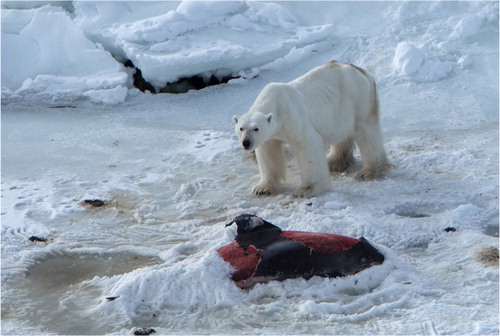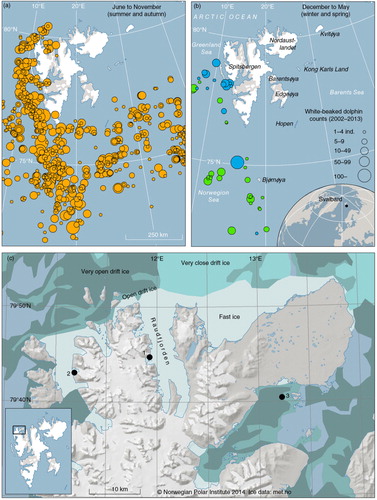Figures & data
Fig. 1 A male polar bear on the carcass of a white-beaked dolphin, 23 April 2014. The bear has started to cover the remains with snow. Just to the left of the dolphin is a hole in the ice, assumed to be a breathing hole that dolphins trapped in the ice have kept open.

Fig. 2 (a) Sea-ice distribution in April 2014 and the position (1) where the bear and the two white-beaked dolphins were observed at that time. The other observations of carcasses and scavenging bears from summer and autumn were at position (1) as well as positions (2) and (3). All reported observations of white-beaked dolphins from 2002 to 2013 in (b) June–November and (c) December–May. Circles sizes denote the estimated group sizes of the pods observed. Green circles are from December to March, blue from April to May. The observations are from the Norwegian Polar Institute's marine mammal sightings database (www.mms.data.npolar.no/), an archive of reported observations from different sources, particularly cruise ships, operating in the waters of Svalbard.

Fig. 3 An adult polar bear feeding on the remains of a white-beaked dolphin in Raudfjorden on 2 July 2014. The dolphin is presumed to be a member of the same pod as the dolphins eaten by a bear in April.
© Samuel Blanc/www.sblanc.com

